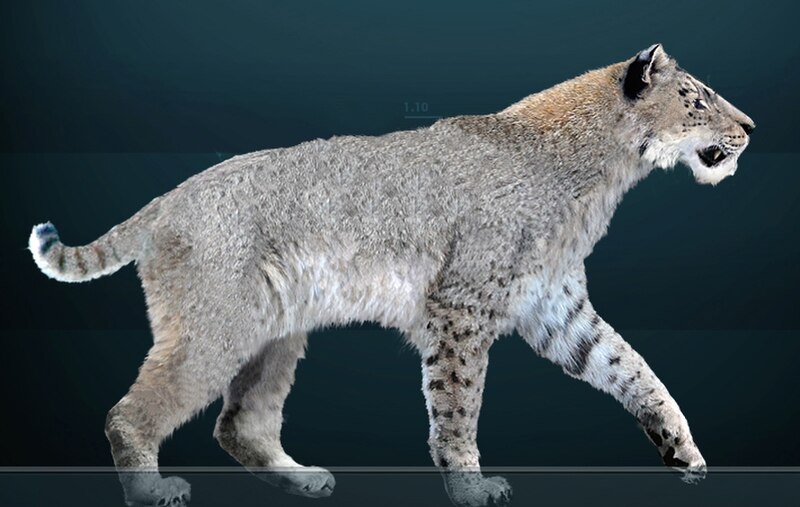- Mar 20, 2005
- 4,385
- 2,835
- 113
Feliformia (cont.):
The true saber-toothed cats fall under the felid subfamily Machairodontinae, which included, in addition to the well-known Smilodon, creatures such as these:

Homotherium, the scimitar-toothed cats, lived from the Pliocene to Pleistocene (5 mya to 10,000 years ago). They reached a shoulder-height of 1.1 m (3.6 ft.) and weighed from 150-250 kg (330-550 lbs.). The species represented here is H. serum, the American scimitar.

Dinofelis, living from the early Pliocene to early Pleistocene (5 mya - 1.2 mya), ranged in size between a leopard and a lion, with most being about the size of a jaguar (up to 120 kg).
However, there were of course other cats besides the saber-toothed variety, such as:

Panthera leo atrox, the American lion, lived in colder climates than modern lions. It was one of the largest cats to exist, at about 4 feet high at the shoulder and weighing up to 351 kg (774 lbs.).
The true saber-toothed cats fall under the felid subfamily Machairodontinae, which included, in addition to the well-known Smilodon, creatures such as these:

Homotherium, the scimitar-toothed cats, lived from the Pliocene to Pleistocene (5 mya to 10,000 years ago). They reached a shoulder-height of 1.1 m (3.6 ft.) and weighed from 150-250 kg (330-550 lbs.). The species represented here is H. serum, the American scimitar.
Dinofelis, living from the early Pliocene to early Pleistocene (5 mya - 1.2 mya), ranged in size between a leopard and a lion, with most being about the size of a jaguar (up to 120 kg).
However, there were of course other cats besides the saber-toothed variety, such as:

Panthera leo atrox, the American lion, lived in colder climates than modern lions. It was one of the largest cats to exist, at about 4 feet high at the shoulder and weighing up to 351 kg (774 lbs.).





